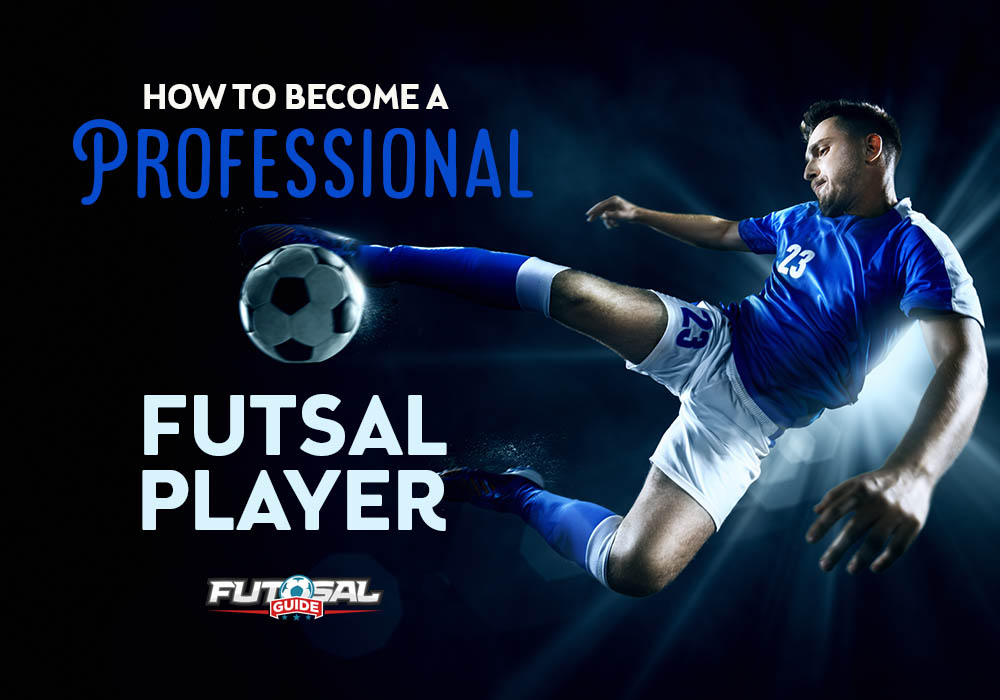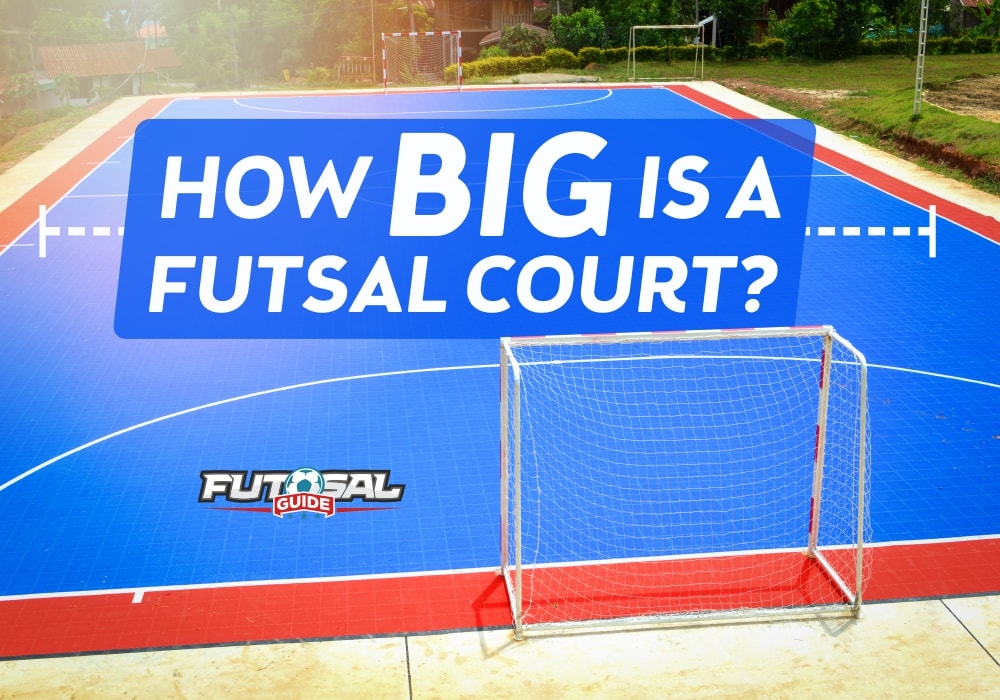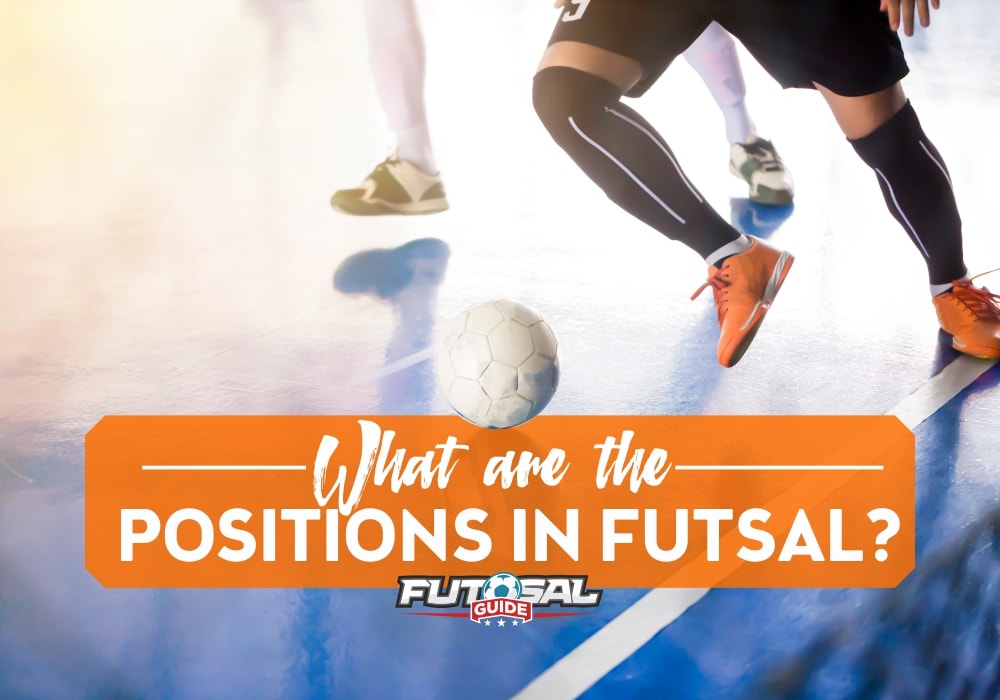Getting hurt sucks! Whether you are playing futsal for enjoyment, socializing, fitness or whatever else it is a little difficult to do anything when you are stuck nursing an injury back to health.
When it comes to sports it is essential that you warm up correctly. Your warm-up prevents injuries during activities, but did you know you can get injured while warming up?
Although it can be difficult in knowing how and what the best exercises are, you do not have to worry anymore, we have got you covered. Ignorance is not bliss when it comes to warm ups and if you ignore them you are most certainly going to get hurt at some point.
Psst! You do not have to do all these exercises in one go. You can complete a combination of them, just remember to target your whole body. A short warm-up is better than no warm up!
Here is a list of the best warm-up exercises and how to complete them correctly.
- Arm Rotations
- Torso Rotations
- Neck Rotations
- Leg Kicks
- Skipping Rope
- Jumping Jacks
- Lunges
- Grapevine
- Side Shuffle
- High Knees
- Back Pedaling
- Walking Knee Hugs
- Lateral Lunge Windmill
- Inchworm
- Pogo Jump
- Light Jog-Run
- Push-ups
- Sit Ups
- Burpees
- Glute Kicks
1. Arm Rotations
- Hold your arms out horizontally 90 degrees to your body.
- Rotate your arms forward and complete a circle.
- Repeat the above action but backwards.
- Now rotate one arm going forward and one arm going backwards.
- Then switch arms so the arm that was going backwards now circles forwards and vice versa.
2. Torso Rotations
- Stand with your feet shoulder width apart.
- Hold your arms out horizontally at a 90-degree angle to your body.
- Rotate your torso to bring your right hand in front of your left shoulder.
- Return back to the starting position.
- Now twist your torso to bring your left hand in front of your right shoulder and return.
3. Neck Rotations
- Face forward in a relaxed stance.
- Tilt your head to the left and return to the center.
- Lean your head to the right and return to the middle.
- Angle your head back so you are looking up and return so you are facing forward.
- Now drop your head forward so you are looking down and return.
4. Leg kicks
This lubricates your hips for movement, improves balance and stretches your legs out.
TIP: It is best to do this exercise with something to brace yourself against. Facing a pole works great!
- Stand in front of the pole and place both palms firmly on it. You should be far enough away from the pole that your arms are fully extended.
- Have your feet roughly shoulder width apart.
- Now take your left leg, swing it back, and follow through so it is in front of you. Be sure you are not going to collide with the pole.
- Then return it to the beginning position
- Now repeat the same action with your right leg.
TIP: It is best to do this exercise with something to brace yourself against. Facing a pole works great!
5. Skipping Rope
Jumping rope gets your blood pumping, increases your heart rate and loosens up your muscles.
- Place the handles of the skipping rope in each hand.
- Have the rope behind you. Keep your elbows tucked in.
- Circle your forearms to bring the rope in front of you and jump.
- Repeat.
TIP: Maintain your speed and for the last 30 seconds power it out and speed it up.
6. Jumping Jacks
This is a full body warm up. It stretches out and warms up your limbs and increases your heart rate.
- Start with your feet together and your hands by your side.
- Simultaneously you are going to jump stretching your legs out to shoulder width apart or wider and bringing your arms up in the air. Your body should look like an x as you land.
- Then you are going to jump again and land back in your starting position with your feet together and hands by your sides.
7. Lunges
This targets your major muscles in your lower body.
- Begin with your feet shoulder width apart and your toes facing forward.
- Step forward with your right foot and bend your right knee until your left knee is touching the ground behind you.
- Then bring your left foot forward in front of your right. Bend your knee until your right knee touches the ground.
TIP: Remember to keep your back straight to ensure you have proper posture. Your head should be facing forward. You will be moving horizontally so be sure you have room.
8. Grapevines
Improves your lateral movement, increases flexibility, footwork and loosens up various muscles such as quads, hamstrings, calves, glutes and core.
- Step out with your right foot to your right side. Follow with your left foot that crosses over in front of your right leg.
- Now take your right leg and cross it behind your left so that it is in front again.
- Bring your left leg together so you are in a normal standing position.
- Repeat the steps in reverse order.
- Cross in front, then back.
- While you are crossing over your legs you should aim to twist your torso while doing the footwork to increase the workout to your core.
TIPS: Go slow first to ensure you have proper technique and getting the full benefits of this warm up.
Be sure you bend your knees, keep your head up your shoulders back and relaxed.
make sure your feet are firmly planted before moving again to avoid tripping.
9. Side Shuffles
This warms up your lower body, and improves foot work.
- Start with your feet approximately shoulder width apart.
- Bend your knees and waist to crouch low – remember to keep your back straight.
- Now you are going to sidestep out with your right foot.
- When you have planted your right foot, you are going to close the gap by bringing your left foot next to your right. This targets your right side.
- To target your left side. Sidestep out with your left foot and bring your right foot next to it to close the gap.
10. High Knees
Great to increase your heart rate and get your blood pumping while targeting your hamstrings.
- Place your hands in front of your body at hip height or higher.
- As you jog along you are going to bring your knees up to make contact with your palms.
- Your steps should be small to ensure you are getting the height and not losing your balance.
TIP: Make sure your back is straight, your head is facing forward and you aren’t lowering your hands as you make contact with your knees.
11. Back Pedaling
This focus’ on balance and quick feet movement.
- Essentially your are going to jog backwards with light steps.
- Turn your back to the area you are warming up in. Be sure that there is nothing in your way that you may trip over.
- Take your left foot and step backwards. As soon as your foot hits the ground you want to take your right foot and step behind your left.
TIP: Your aim is to be springy on your feet as you transition to each foot.
12.Walking Knee Hug
Targeting your lower muscles particularly your hamstrings and developing your balance.
- Start with your feet apart.
- As you go to take a step forward you raise your knee up to your hip height or higher.
- Then you use your hands/arms to ‘hug’ your knee and pull it in towards your belly or chest. This should not be painful – if it is you are pulling in too far.
TIP: Remember to keep your head forward and your back straight.
13. Lateral Lunge Windmill
Improves side to side movements and balance.
- Spread legs approximately double shoulder-width apart.
- Your feet should be facing forward.
- Shift your weight to your right side – this stretches out your left leg.
- Your right knee should be bent at 90 degrees. Similar to a forward facing lunge.
- Take your left hand and place it on the floor on the inside of your right foot.
- Twist your torso and reach to the sky with with right hand.
- Reverse your movements and repeat on the left.
14. Inchworm
The Inchworm loosens hips, hamstrings, calves and elevates your heart rate.
- Start in your standard push up position on your toes not the knees. Keep your palms flat on the floor.
- Your legs need to remain straight as you inch your feet forward towards your hands.
- Once your heels are flat on the ground keep your shoulders over your hands.
- You should somewhat look like an upside down U or V.
- Then inch your feet backwards until you end up in your original push up position.
TIP: If you are struggling to get to the point where your heels are flat and legs are straight. Use a small box or step and place it under your hands to elevate slightly.
15. Pogo Jump
This fires up your nervous system and switches on your muscles.
- Stand with your feet shoulder width apart. Jump vertically.
- As soon as you land jump again. Your aim is speed not height. Picture jumping on a Pogo stick.
16. Light Jog-Run
This increases your heart rate, warms up your muscles for movement and gets your adrenaline and endorphins running.
- Go for a light jog for a few minutes either on the spot of over a distance.
- For the last section or 30 seconds of your jog you could power through a sprint.
17. Push Ups
This targets your whole body from your arms and shoulders to your core and legs.
- Your hands should be placed shoulder width apart or a little wider. The wider your hands are the easier it is to perform your push up.
- You can either place your feet together or hip width apart. It is important to keep on your toes. There should also be a straight line should running from your heels to your head.
- As you bend your elbows and lower your body to the ground your fingers should be spread out with your middle fingers point 12 o’clock.
- When your elbows reach around a 45 degree angle to your body (elbows in line with your shoulders) you push back up so you are in your starting position.
TIPS: Listen to your body if it is hurting change you hand or feet placement. Everyone is different and depending on your strength and shoulder mobility will affect your stance.
18. Sit Ups
This targets your core in particular.
- Lie down on your back. Bend your knees and set your feet around hip distance apart. You can either place your hands on the back of your neck, on the side of your head or across your chest.
- Take a breath in and exhale.
- ‘Pull’ your belly button in toward your spine as you gentle raise your torso by bending at the hips and waist. Lift until your torso is just inches from your thighs.
- Inhale and control your return to the beginning position.
TIPS: Wherever you place your hands you need to be light with them and ensure you are not using them to push or pull yourself up. Move slowly and control the movements to prevent using momentum rather than warming up your muscle.
19. Burpees
A full body warm up that gets your blood pumping.
- Squat down and place your hands on the floor in front of you, just outside of your foot placement.
- Jump or walk both feet back so you are in a planking/push up position.
- Drop down and complete a push up, returning back to your planking position.
- Jump or walk your feet back towards your hands.
- From your squatting position jump into the air, reaching your arms to the sky.
- Land and return to the beginning pose.
20. Glute Kicks
Targets your hamstrings, glutes and quads to prepare for movement while increasing your heart rate.
- Start by standing with your feet apart, proper posture and your hands by your sides.
- Raise one foot off the floor and allow it to touch or almost touch the area just below your bum.
- Return your foot to the ground and repeat on the other side.
- You can do this in one on the spot or over a distance.
TIP: Remember you shouldn’t move your thighs at all and try to increase your speed as you go once you have the technique down pact.
Why is warming up so important?
Muscles are like rubber bands. If you try to stretch it out immediately without slowly increasing the stretch it is more likely going to snap! And that is just what your muscles will do.
Loosening, warming up and ‘activating’ your muscles to work will keep them strong and injury free.
It also primes your system by improving your blood circulation which helps you to perform better.
Warm-ups also begin to release endorphins and adrenaline in your body which helps in you pushing your limits.
Make sure your warm-up targets the muscles you are going to be using during your activity.
It is great to do a combination of the listed exercises with a few reps or for a few minutes.
Ultimately, it is up to you on how many reps and how much time you spend on your warm up, just remember to target all your muscles!
Related Questions
What is the difference between stretching and warming up?
Stretching is to increase your flexibility and range of motion. Warm ups are meant to elevate your core temperature and increase your blood flow.
You should ideally do a warm up before stretching to avoid straining your body and causing injury.












 futsalguide.com
futsalguide.com futsalguide.com
futsalguide.com

